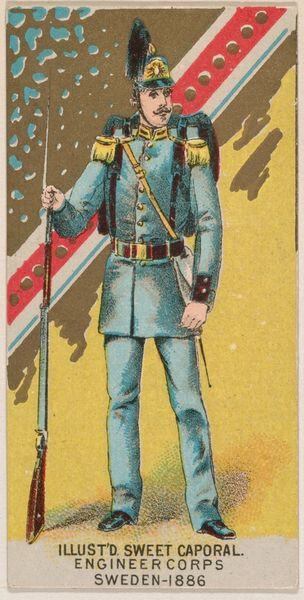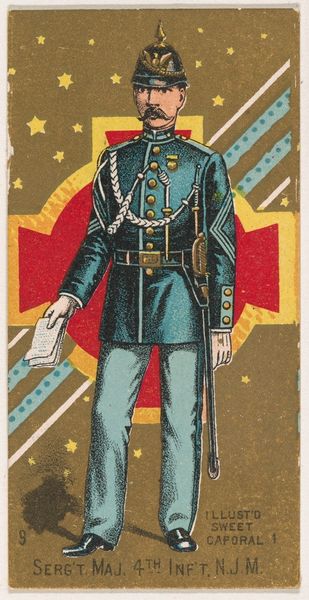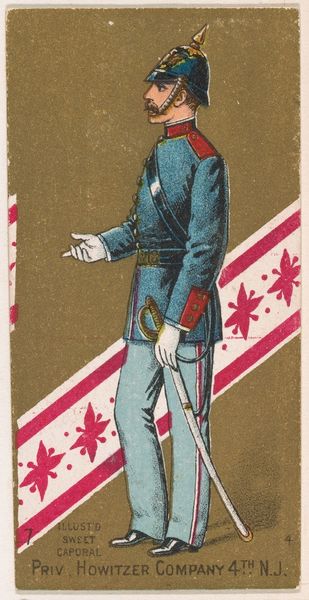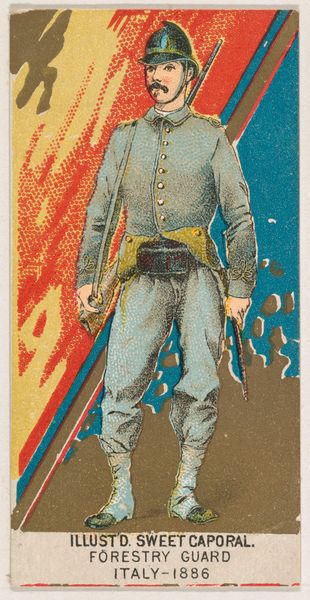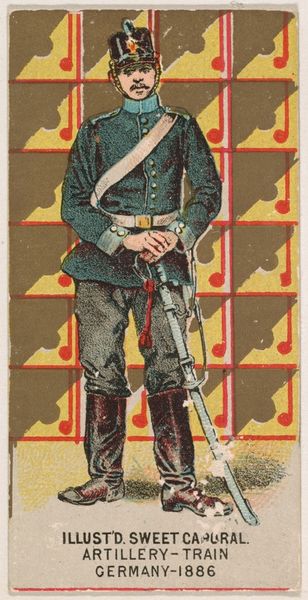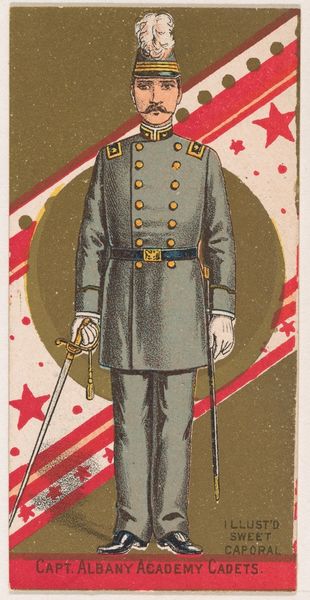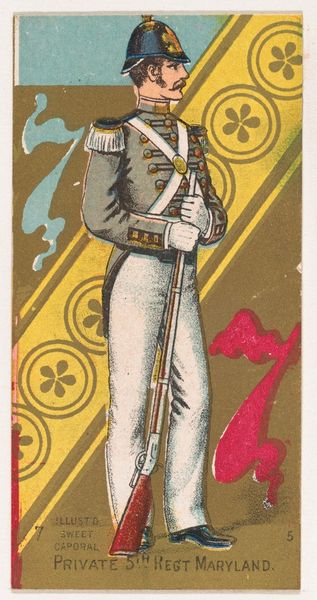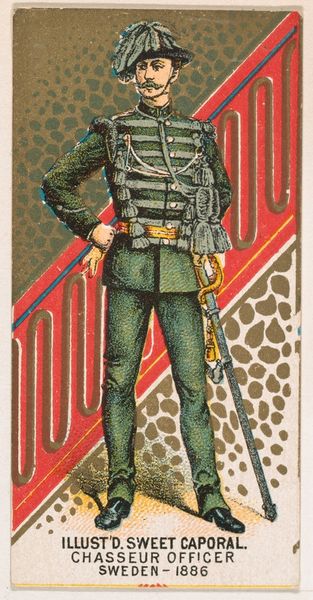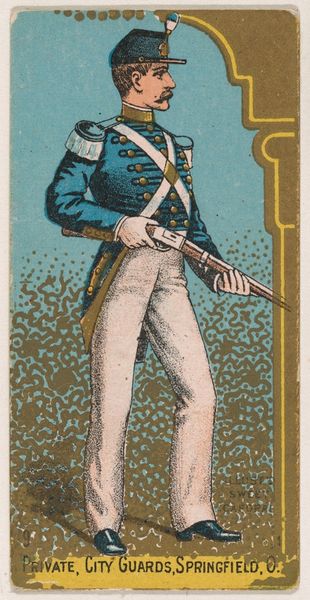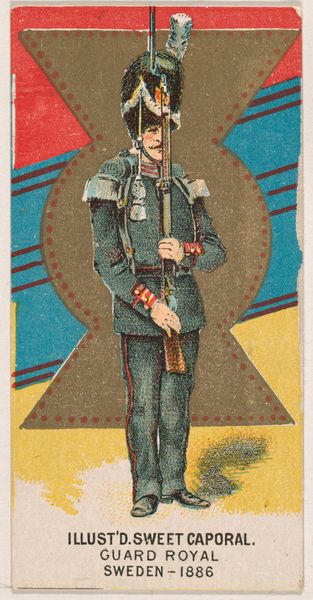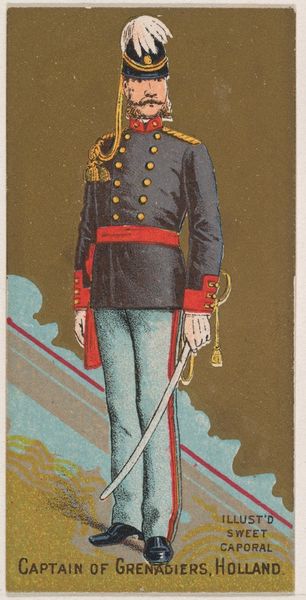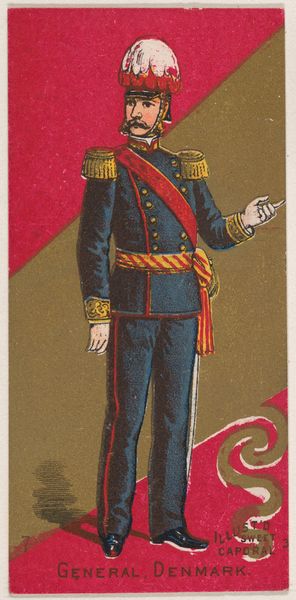
Officer of Infantry, Germany, 1886, from the Military Series (N224) issued by Kinney Tobacco Company to promote Sweet Caporal Cigarettes 1888
0:00
0:00
drawing, coloured-pencil, print
#
portrait
#
drawing
#
coloured-pencil
# print
#
caricature
#
caricature
#
coloured pencil
#
watercolour illustration
#
genre-painting
#
history-painting
Dimensions: Sheet: 2 3/4 × 1 1/2 in. (7 × 3.8 cm)
Copyright: Public Domain
Editor: Here we have “Officer of Infantry, Germany, 1886," a print from 1888 published by Kinney Tobacco Company. What I find most intriguing is its origin as a cigarette card, something designed to be collected and traded. What strikes you about this image, considering its commercial context? Curator: I'm interested in how these images circulated within a specific socio-political climate. These cigarette cards, initially aimed at brand promotion, often reveal complex narratives of nationalism and imperial aspirations. Germany in 1886, under Kaiser Wilhelm, was a burgeoning military power. These idealized portraits reinforced notions of national pride and a disciplined martial spirit, especially through depictions of a stern soldier in a carefully delineated caricature. How did this type of readily-available imagery shape public perception of the military and the state? Editor: So, the card served not only to sell cigarettes but also to subtly promote a specific image of German strength and order? Do you think the company was conscious of their influence, or did it occur more organically? Curator: I think it's both. Kinney Brothers Tobacco Company were acutely aware of marketing opportunities. The deliberate use of the uniform is intriguing, signifying status and power while functioning within an easily distributable, collectible format. I wonder if the scale, its accessibility and repetitive printing and reprinting, amplifies the propagandistic qualities. Editor: That's a really astute point, how the method of distribution adds to its power. Thinking about it as a piece of propaganda displayed in a gallery certainly changes my view. Curator: Precisely! Understanding these nuances gives a much more detailed analysis of its cultural footprint. Editor: Well, thanks for the chat! Now I'll always question the purpose of printed items!
Comments
No comments
Be the first to comment and join the conversation on the ultimate creative platform.
